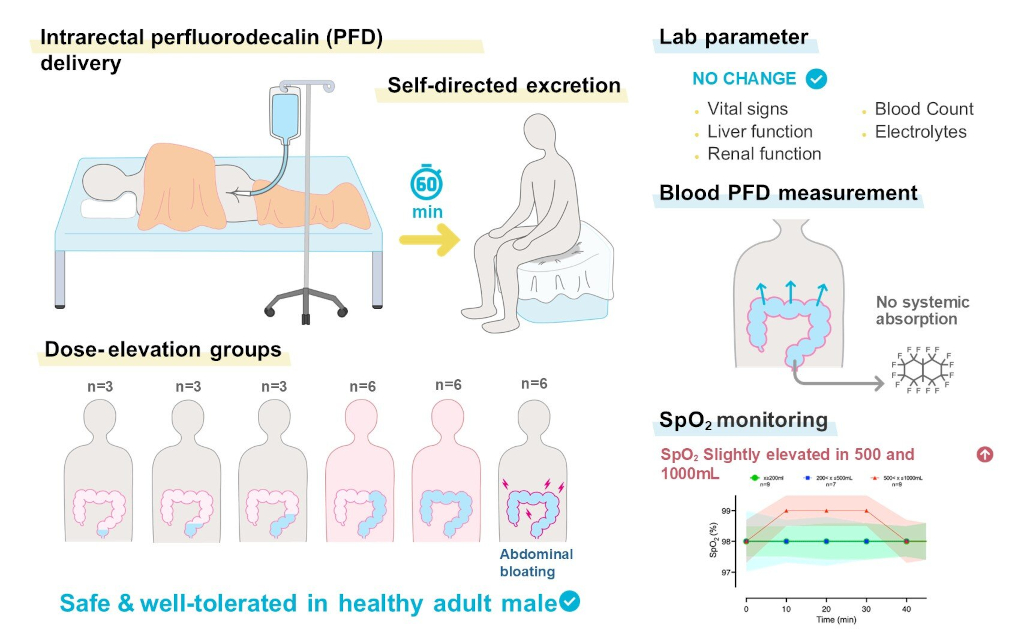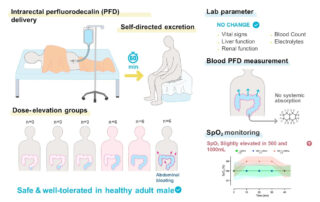Tessa Finds “Butt Breathing” is Worth More Study
“Enteral Ventilation” was strange enough to get scientist’s attention. Turns out, they might be on to something

Visual abstract shows highlights of first human clinical trial to evaluate the safety of enteral ventilation concept developed by Takanori Takebe, MD, Ph.D., and colleagues. Credit: Med (2025). DOI: 10.1016/j.medj.2025.100887 | Source: https://pubmed.ncbi.nlm.nih.gov/35590139/
In testing Tessa’s ability to accurately evaluate and score medical research, people run a lot of papers seeing if they can trip up the platform’s analysis. We’ve seen pay-to-publish studies from sketchy device manufacturers, self-citing paper mill junk, retracted works, and studies 100% manufactured by AI.
So you can imagine what the testing guys thought when they were asked to feed Tessa a paper noted on Medicalxpress.com that looked at enteral ventilation, aka “butt breathing.”
The study was weird enough that it garnered an Ig Nobel Prize (the “Igs”) in 2024 from the Annals of Improbable Research. The award highlights discoveries at are surprising but also make people laugh (and think). However, it was just a preliminary one, designed to determine whether enteral ventilation was safe rather than effective. But, it did reference one from 2021, Mammalian enteral ventilation ameliorates respiratory failure which did test whether mammals are capable of breathing through their butts.
We gave that one to Tessa. The results lifted a few eyebrows.
The Paper Scored Well
First off, Tessa gave the paper an overall score of 77 out of 100 for trustworthiness, a very solid score—in the top 15% of papers. (Papers with a 90 or above are extremely rare, and Tessa has never given a 100.) A 77 indicates the science and methodologies are well-grounded and thorough and meet thresholds for transparency, explainability, and significance (T.E.S.). It’s other factors such as cohort size, rigor, the authors’ or publication’s reputation, etc. that took away from its overall, but still very respectable, score.
More interesting, Tessa’s analysis of the work scored it quite highly. An 8 of 10 in the “Theoretical-to-Empirical” and a 9 of 10 in the “Known-to-Novel” categories. Numbers that high are unusual, which means it’s a foundational work definitely worthy of more study. In the words of one of our engineers, “mammalian butt breathing is legit.”
If there’s a takeaway from this, it’s that people talking out their a*ses might just be a figure of speech, but enteral ventilation is a real thing.
If you’re interested, you can read Tessa’s full analysis of the paper below.
Tessa Analysis Results


Content Analysis
Research Question
Can the distal gut be repurposed as an accessory respiratory organ in mammals, delivering oxygen via the anus to alleviate systemic hypoxia and rescue respiratory failure?
Main Contribution
The study demonstrates, for the first time, that enteral ventilation via the anus (EVA) using either oxygen gas or oxygen-saturated perfluorocarbon can achieve clinically meaningful systemic oxygenation in mice and pigs with respiratory failure, improving survival and physiological parameters without major adverse effects, and thus proposes a novel, adjunctive route for respiratory support.
Theoretical to Empirical: 0.80
The study is almost entirely data-driven: it reports controlled experiments in mice, rats and pigs, including survival curves, arterial/venous blood-gas measurements, behavioural tracking and histopathology (pp.4–8). Safety assays such as endotoxin quantification, serum chemistry and GC-MS for drug levels are also presented (pp.7–9). These multiple in-vivo experiments make the paper highly empirical. However, it stops at pre-clinical animal work—there are no human subjects or randomized clinical trials—so it does not reach the very top end of empiricity.
Weak to Rigorous: 0.56
The paper presents a provocative proof-of-concept that mammalian distal gut can be repurposed for gas exchange. Across small-rodent and porcine models, both gas and liquid EVA increased systemic oxygenation and, in mice, markedly improved survival during lethal hypoxia. Strengths include multi-species validation, use of both functional (survival, behavior, SpO2) and biochemical (blood gases) endpoints, and an initial safety assessment. However, many experiments rely on very small sample sizes with limited randomization/blinding, short observation periods, and single time-point toxicity assays, which constrain statistical power and translational certainty. The requirement for mucosal abrasion in g-EVA limits clinical feasibility, while l-EVA efficacy, though encouraging, achieved modest PaO2 gains (~13 mm Hg) in pigs. Overall, the evidence supports feasibility but further studies with larger cohorts, longer follow-up, and disease-relevant models are needed to establish efficacy and safety.
Known to Novel: 0.90
Using the distal intestine as a functional respiratory organ in mammals had been largely speculative, with only scattered, historic or non-mammalian observations. This study is the first to show reproducible, lifesaving systemic oxygenation through enteral delivery of either oxygen gas or oxygen-saturated perfluorocarbon in two mammalian species, including a clinically relevant pig model, and to document safety data. It therefore opens an entirely new, previously unexplored route for respiratory support, representing a highly original research question and contribution.
Summary
Overall, the paper is scientifically sound and well executed. While the Authors’ collective h-index and Journal’s impact score pulled the overall score slightly lower, the Methods/Quality score, which forms the bulk of the overall score, is quite strong. Moreover, the paper’s Authentic score shows that no AI was used to help create it. The Media Score (coverage and discussion of paper online) is solid. If the topic of enteral ventilation continues to draw positive attention, this score will likely rise.
The full text of this paper is available here: https://www.cell.com/med/fulltext/S2666-6340(21)00153-7






